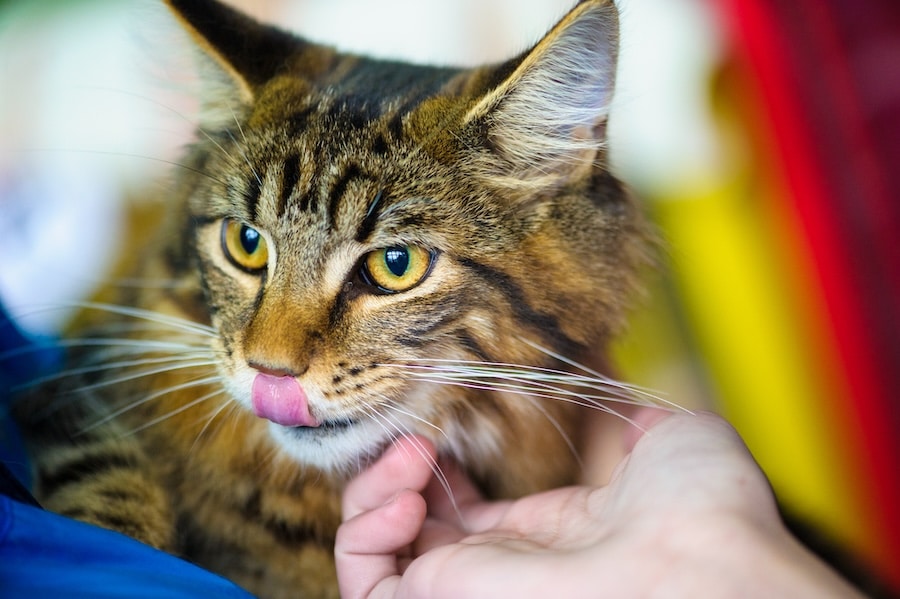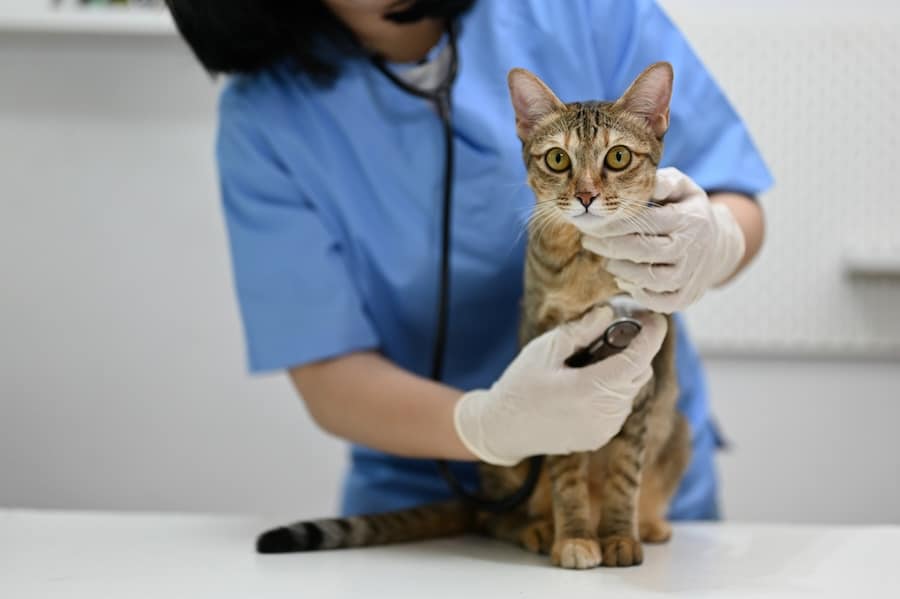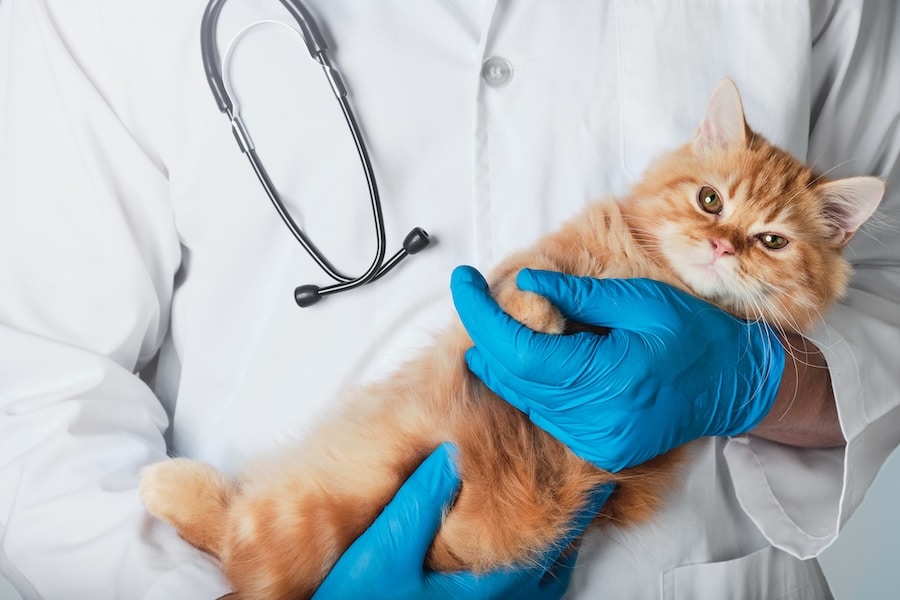To determine if your cat is dehydrated, look for signs such as sunken eyes, sticky gums, and decreased skin elasticity (when pinched, the skin may stay tented). Symptoms can also include lethargy, loss of appetite, and reduced urination. If you notice these signs, offer your cat more fresh water and wet food to encourage hydration. In severe cases, consult a veterinarian for treatment, which may include intravenous fluids or subcutaneous fluids to restore hydration and address any underlying health issues.
Signs and Symptoms of Cat Dehydration
Dehydration in cats can manifest through several noticeable physical symptoms. Some of the most common signs of dehydration include:
- Sunken Eyes – A cat’s eyes may appear dull, dry, or noticeably recessed in the sockets.
- Sticky Gums – Instead of being moist and slick, a dehydrated cat’s gums may feel tacky or dry.
- Changes in Skin Elasticity – When gently pinched between the shoulder blades, the skin of a well-hydrated cat should quickly return to its normal position. If it stays tented or returns slowly, dehydration may be present.
- Lethargy and Weakness – A cat suffering from dehydration may seem unusually tired, uninterested in activity, or reluctant to move.
- Loss of Appetite – Dehydration can lead to a decreased interest in food, worsening the condition if the cat is also avoiding wet food or fresh water.
How to Check a Cat for Signs of Dehydration
Cat owners can assess their feline friend’s hydration status using a few simple tests:
- Gums: Gently press a finger against the cat’s gums and release. The gums should return to a pink color immediately. If the color takes longer to return, it may indicate dehydration.
- Skin Elasticity: Lift a small section of the cat’s skin between the shoulder blades and let go. If it does not fall back into place right away, dehydration may be a concern.
- Eyes: Observe the cat’s eyes for any sunken appearance or unusual dryness, both of which can be signs of severe dehydration.
Link Between Litter Box Usage and Dehydration
A cat’s litter box habits can offer valuable insight into their hydration levels. A dehydrated cat may urinate less frequently, produce smaller amounts of urine, or have darker, more concentrated urine, which can be a sign of kidney problems or chronic kidney disease. Additionally, dehydration can lead to constipation due to reduced moisture in the digestive system. By regularly monitoring both a cat’s water bowl and litter box habits, owners can catch dehydration early.
Understanding Dehydration in Cats
Dehydration in cats happens when their body loses more fluids than it takes in, affecting essential functions like temperature regulation, digestion, and circulation. Staying hydrated is key to maintaining a cat’s overall health. When dehydration occurs, it can impact organ function and lead to serious health issues.
Potential Reasons Cats Become Dehydrated
There are several potential reasons a cat may experience dehydration, ranging from external factors to underlying health conditions. Some common causes include:
Inadequate Water Intake
A cat that does not drink enough water from its water bowl or refuses to consume wet food is at a higher risk.
Kidney Disease and Chronic Kidney Disease (CKD)
Older cats and those with kidney problems often struggle with maintaining hydration levels, requiring intravenous fluids or subcutaneous fluids in severe cases.
Warmer Weather and Temperature Regulation
Heat increases a cat’s need for water, and a dehydrated cat may struggle with body temperature control.
Underlying Health Problems
Some overarching health conditions such as diabetes, vomiting, diarrhea, or fever can rapidly deplete fluids in cats and kittens.
Diet and Litter Box Habits
A diet consisting only of dry food without access to fresh water can contribute to dehydration. Reduced urination or concentrated urine in the litter box may signal an issue.
Treatment and Prevention of Dehydration in Cats
If a cat’s dehydration is mild, increasing water intake and offering wet food may help restore proper hydration. However, in severe cases, dehydration can become a serious health risk, requiring immediate veterinary care. A veterinarian may administer:
- Intravenous (IV) Fluids – Used in critical situations to rapidly rehydrate and stabilize a cat suffering from severe dehydration or kidney failure.
- Subcutaneous (Sub-Q) Fluids – In less urgent cases, fluids can be injected under the skin to gradually improve hydration. This is commonly recommended for older cats or those with chronic kidney disease.
- Electrolyte Solutions – Specialized veterinary solutions may be used to help balance minerals essential for a cat’s overall health.
Prompt treatment is essential, as prolonged dehydration can lead to serious complications, including kidney disease and organ damage.
Encouraging Proper Hydration
Preventing cat dehydration starts with ensuring consistent water intake. Cat owners can take proactive steps to encourage hydration, such as:
- Keeping the Water Bowl Clean – A cat’s water bowl should be cleaned and refilled daily with fresh water to encourage drinking.
- Providing Multiple Water Sources – Placing bowls in different areas of the home can help cats drink more frequently.
- Using a Pet Fountain – Many cats prefer running water, making a pet fountain an effective way to promote hydration.
- Adding Ice Cubes – Dropping an ice cube into the water bowl can make it more appealing and keep it cool, especially in warmer weather.
- Feeding Wet Food – Since wet food contains significantly more moisture than dry food, supplementing meals with wet options can help keep a cat well-hydrated.
- Mixing Water into Food – For cats that prefer dry food, adding a little clean water or broth can help increase moisture intake.
Importance of Regular Veterinary Check-Ups
Routine veterinary care plays a crucial role in monitoring a cat’s health, hydration status, and overall well-being, especially for those at higher risk of dehydration. Older cats are more prone to kidney problems, making regular check-ups essential for early detection and effective management. For cats diagnosed with chronic kidney disease, retaining fluids can be a challenge, often requiring close monitoring. Additionally, cats with other health conditions, such as diabetes, may experience frequent dehydration and need medical attention to address underlying causes. By staying proactive with hydration management and scheduling regular veterinary examinations, cat owners can help ensure their feline friend remains healthy, reducing the risk of dehydration and its potential complications.
Coastal Veterinary Care’s Dedication to Cat’s Hydration and Health
At Coastal Veterinary Care, we understand the importance of maintaining your cat’s overall health, including proper hydration. Our team is dedicated to providing comprehensive care tailored to the unique needs of your feline companion. Our commitment to excellence in veterinary care ensures that your cat receives the best possible treatment at every stage of life.
In addition to screening your cat for dehydration or other related health issues, we provide a series of other services:
- Emergency Pet Care
- Pet Oncology
- Cat Wellness Exams
- Dog Wellness Exams
- Cat Vaccinations
- Dog Vaccinations
- Senior Pet Care
- Pet Dentistry
- And more!
Contact us today to schedule an appointment and take the next step in supporting your cat’s well-being.
Resources:





